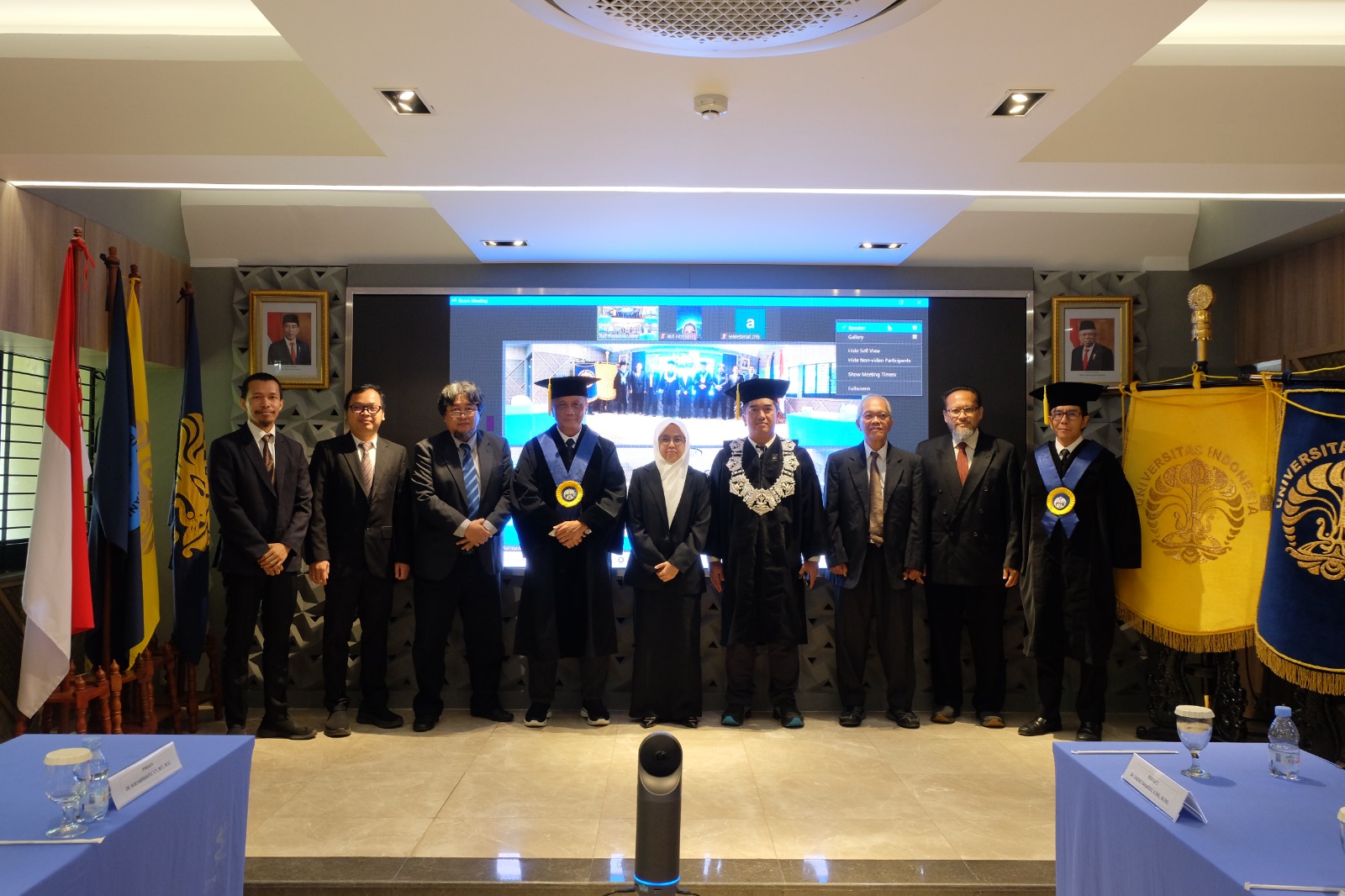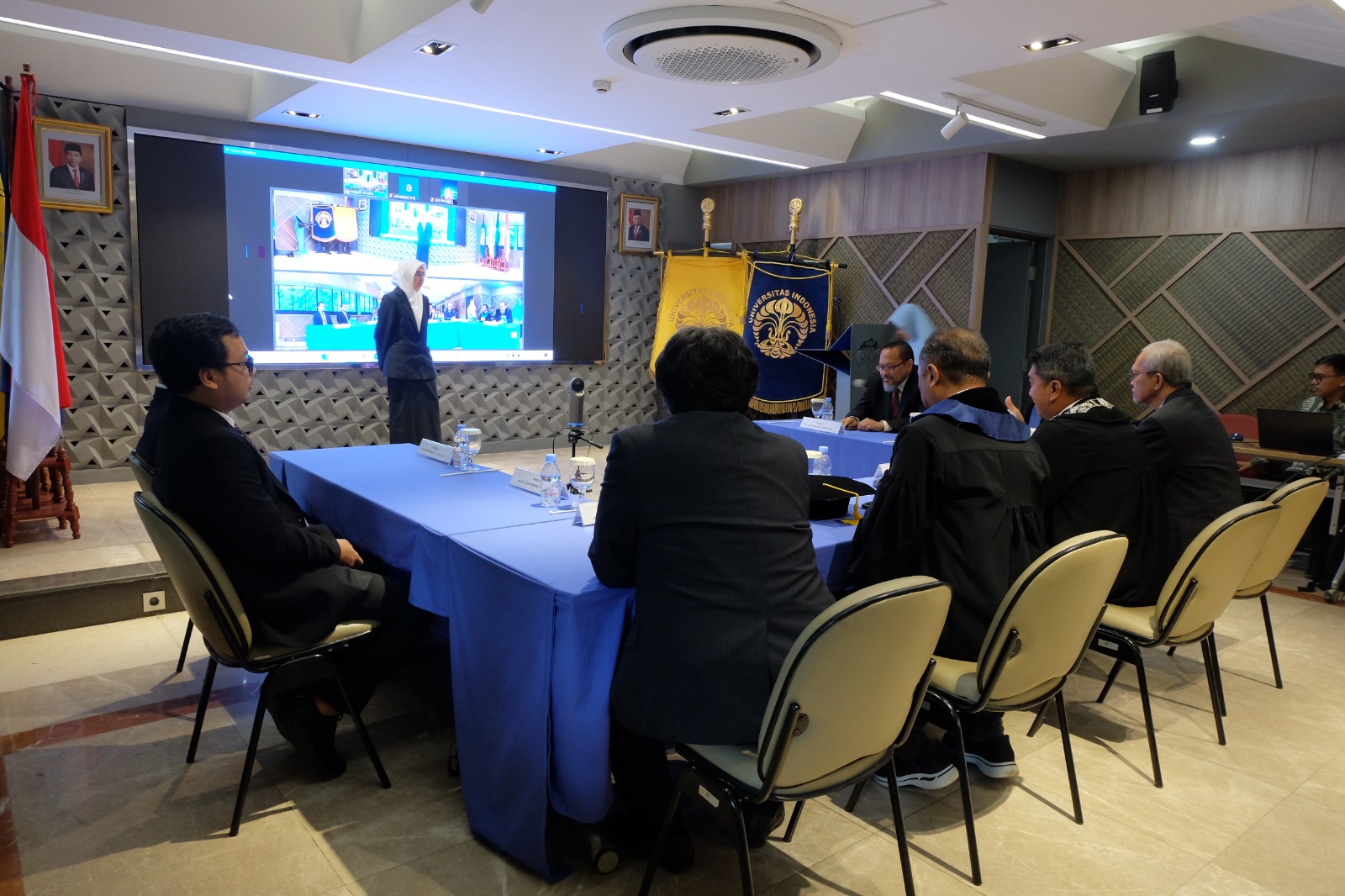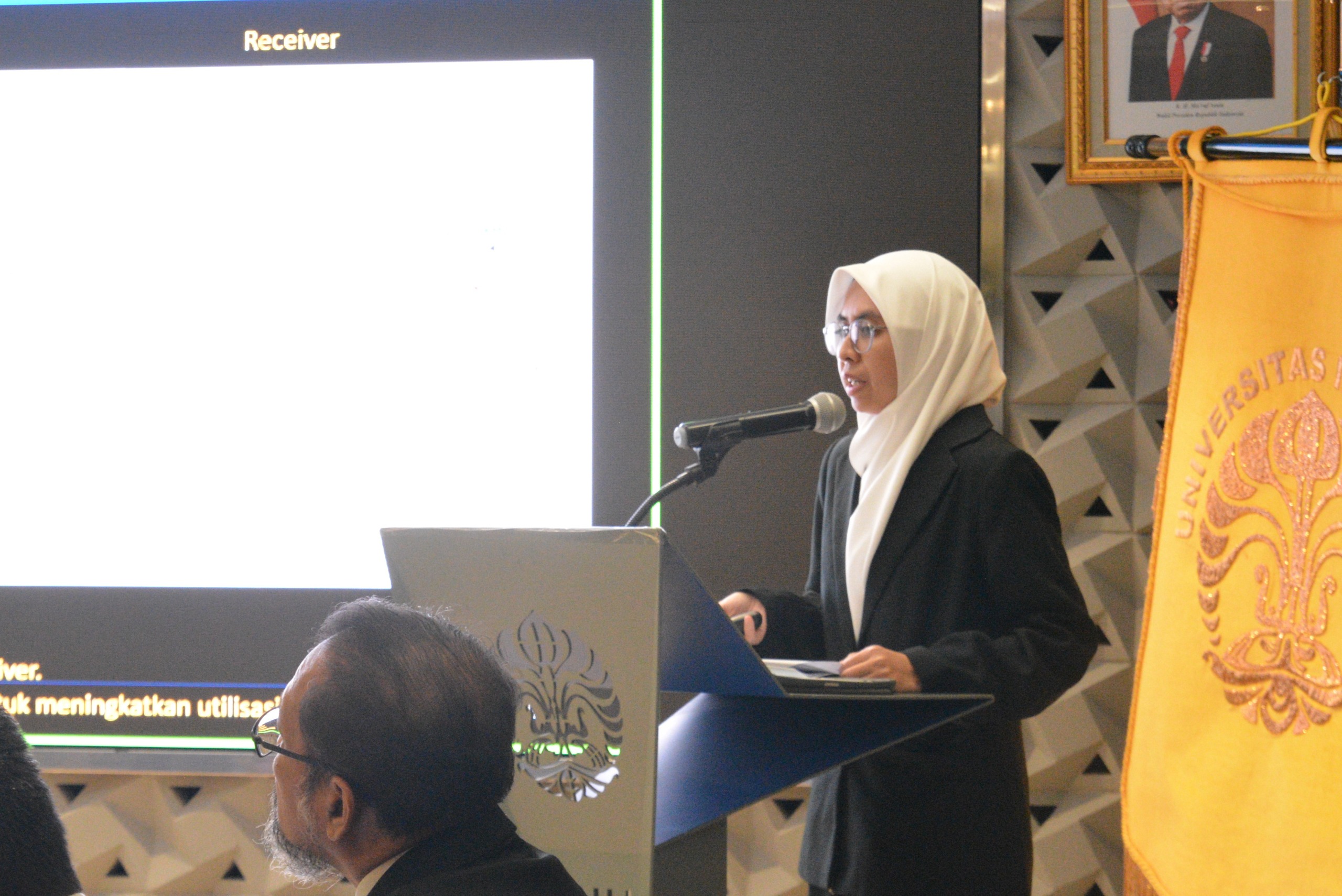During the doctoral defence session held on January 10, 2024, Rahmayati Alindra, a doctoral candidate from the Department of Electrical Engineering, Faculty of Engineering, Universitas Indonesia (FTUI), presented her research on Layered Asymmetrically Clipped Optical Orthogonal Frequency Division Multiplexing (LACO-OFDM) for visible light communication (VLC) systems. Her research aims to enhance efficiency in Visible Light Communication, where data rates are influenced by lighting technology and modulation techniques. Rahma presented her research during the doctoral defence session on January 10, 2024.
In her research, Rahma compared various light sources, including layered blue LED phosphor, achieving data speeds of up to 1 Gbps. Despite the widespread use of layered blue LED phosphor, bandwidth limitations pose a challenge in VLC implementation. To address this, Rahma attempted to apply modulation techniques with good spectral efficiency.
“The development of this research was carried out in four stages: visible light communication transmission, implementation of Direct Current biased Optical (DCO)-OFDM and Asymmetrically Clipped Optical (ACO)-OFDM on the Field Programmable Gate Array (FPGA) board, LACO-OFDM simulation, and LACO-OFDM implementation based on Intellectual Property (IP) Core,” Rahma explained.
In the visible light communication transmission stage, Rahma designed a transmitter and receiver using commercial electronic components, comprising LED lights as transmitters and PIN-type photodiodes as optical receiver components. Laboratory testing showed analogue signal transmission at a distance of 1 meter, resulting in a bandwidth of 3MHz at the transmitter and 2.5 MHz at the receiver. However, bandwidth limitations were observed due to the use of layered blue LED phosphor.
In the second stage, Rahma designed DCO-OFDM and ACO-OFDM and implemented them on the Xilinx Artix-35T FPGA board. It was found that both systems utilized less than 8% of the FPGA resources, with a relatively low power consumption of 0.081 W for DCO-OFDM and 0.082 W for ACO-OFDM. In this regard, Rahma successfully demonstrated that both systems could efficiently utilize FPGA resources, have low power consumption, and meet the established design constraints.
In the third stage, Rahma explained the simulation results, stating, “Subsequently, in the LACO-OFDM development stage, I used a fixed-size Inverse Fast Fourier Transform (IFFT)/Fast Fourier Transform (FFT) block on the transmitter and receiver. Simulations conducted showed that LACO-OFDM with a layered structure could improve spectral efficiency up to 2x compared to ACO-OFDM.”
In the final stage, Rahma developed LACO-OFDM based on the Intellectual Property (IP) Core, where, based on the author’s knowledge, there are no publications discussing this proposal. The LACO-OFDM system developed consists of 4 layers, IFFT/FFT 32 points, and QAM-16 modulation. The proposed use of a fixed-size FFT/IFFT block helps reduce system complexity, accelerate development time, and save FPGA resources.
“The conclusion of this research indicates that LACO-OFDM can be an efficient solution to enhance data transmission in visible light communication systems. This research is expected to contribute to the development of more efficient and economical visible light communication technology,” Rahma concluded in her presentation.
FTUI Dean, Prof. Dr. Heri Hermansyah, ST., M.Eng., IPU, provided feedback on this research, stating, “Rahma’s research not only provides a new alternative in using layered blue LED phosphor in visible light communication but also offers a solution to overcome bandwidth limitations that hinder VLC implementation. With the positive results obtained, this research is expected to pave the way for the development of more advanced and sustainable communication technology.”
Thanks to her research, Rahma was designated as the 165th doctoral graduate from the Department of Electrical Engineering and the 529th doctoral graduate from FTUI. The Doctoral Defense Session was chaired by Prof. Dr. Heri Hermansyah, ST., M.Eng., IPU, with the Supervisor, Prof. Dr.-Ing. Ir. Kalamullah Ramli, M.Eng; Co-Supervisor I, Ir. Purnomo Sidi Priambodo, M.Sc., Ph.D.; and Co-Supervisor II, Dr. Fadjar Rahino Triputra, B.Eng., M.Eng. The Examination Committee consisted of Prof. Dr. Ir. Riri Fitri Sari, M.M., M.Sc., Prof. Dr. Ir Muhamad Asvial, M.Eng., Dr. Ir. Catur Apriono, S.T., M.T., Ph.D, Dr. Ruki Harwahyu, S.T., M.T., M.Sc., and Dr. Sasono Rahardjo, B.Eng., M.Eng.
***
Office of Public Communication
Faculty of Engineering, Universitas Indonesia




